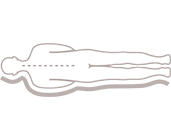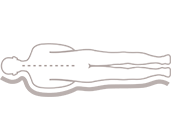What's your size?
After your measurements and sleep behavior are entered, our algorithm will come up with your best pillow match.
 Made to fit your unique body
Made to fit your unique body  Developed by physical therapists
Developed by physical therapists  100% Premium memory foam
100% Premium memory foam  5 Year Warranty
5 Year Warranty  Unique measuring algorithm
Unique measuring algorithm  The healthiest, most relaxing sleeping position
The healthiest, most relaxing sleeping position  Recommended by 5,000+ Healthcare Professionals
Recommended by 5,000+ Healthcare Professionals  Developed by physical therapists
Developed by physical therapists  The best sleeping position
The best sleeping position  Helps to restore Tech Neck
Helps to restore Tech Neck  Recommended by Chiropractors & PTs
Recommended by Chiropractors & PTs 
- Pillowise USA
- 615 W Johnson Ave, Suite 104
- Cheshire, CT 06410
- (844) 291 7392
- info@pillowise-usa.com
- Send us a message on WhatsApp

